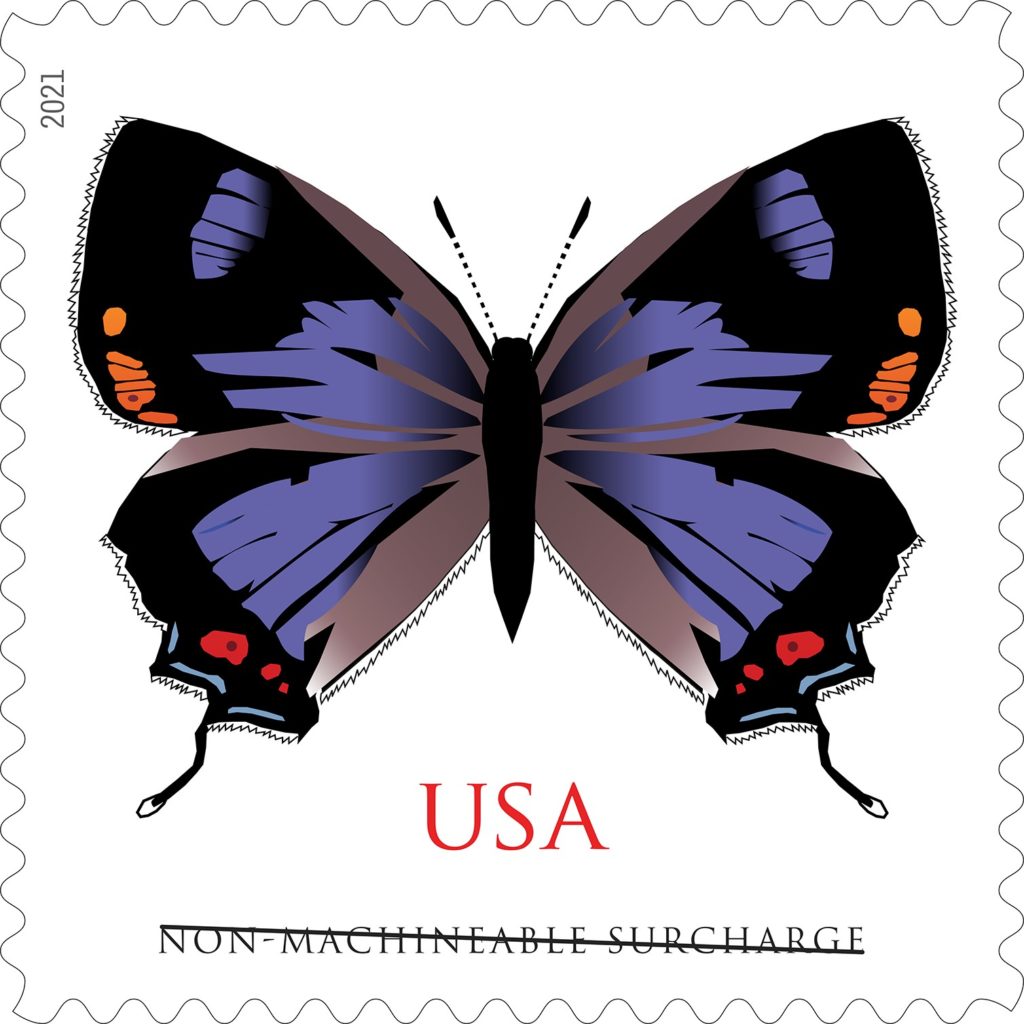 When Colorado State University entomology professor Paul Opler was 10 years old, he began collecting stamps from around the world to learn about the geography and culture of far-off places. His collection, he remembers, was far less colorful than stamps today, and very few featured images of wild flora or fauna.
When Colorado State University entomology professor Paul Opler was 10 years old, he began collecting stamps from around the world to learn about the geography and culture of far-off places. His collection, he remembers, was far less colorful than stamps today, and very few featured images of wild flora or fauna.
On March 9, Opler had the opportunity combine his interests in stamp collecting and insects as he lent his entomology expertise to the United States Postal Service’s virtual first-day-of-issue dedication ceremony for its newest stamp featuring the Colorado Hairstreak Butterfly.
“I was thrilled when the USPS began issuing stamps with North American animals and plants,” says Opler. “This attractive stamp cannot help but increase awareness in our country and possibly worldwide of our wonderful natural heritage and the need to conserve our natural world with all of its amazing biodiversity.”
The new stamp is the eighth in the USPS’s series of non-machinable butterfly stamps, which are used on square or oversized greeting cards, invitations and announcements.
First-day-of-issue dedication ceremonies, which have gone virtual during the pandemic, are a way for the Postal Service to honor and commemorate a subject that has widespread national appeal or has had a significant impact or influence on the society, history, culture or environment of the American experience. Opler spoke alongside USPS Board of Governors member William D. Zollars during the ceremony.
“A lot of these small animals are responsible for ecosystem services like pollination,” Opler said. “About 50% of the fruit and vegetable products in the United States are reliant on insects for pollination. Just everything about butterflies is fascinating.”
Colorado’s state insect
In 1995, the Colorado Hairstreak Butterfly became designated as the state insect. The two-inch butterfly is non-migratory, living its entire life in the canopy of scrub oak trees on both sides of the Continental Divide at elevations of 6,500 to 7,500 feet. The upper side of the insect’s wings feature vibrant and attractive purple markings with black borders and orange accents for use in courtship displays. The undersides of its hindwings include clever blue “eyespot” markings that fool predators, such as birds, into attacking its rear end, allowing it to escape mostly intact.
According to the USPS, the Citizens’ Stamp Advisory Committee makes recommendations for the annual stamp program, and considers the interests and needs of postal customers, as well as those of the stamp-collecting community. Stamp subjects are considered to represent the “Best of America,” as approximately 25 subjects are chosen from among the tens of thousands of requests received each year.
After viewing the ceremony online, Opler and his wife, Evi, drove up to Estes Park to purchase some first-day covers to commemorate the occasion.
“I no longer have the first-day covers that my father helped me to receive from the Postal Service, but I remember him explaining their significance to me – the issuance of each new stamp was like an historic event,” he said.